A major trend is bubbling up in design – bubbling being the operative word, since curves are popping up everywhere in contemporary architecture, interior design and furniture. The straight lines endorsed by 20th-century modernism may have been the norm for decades, but many designers are now proposing an alternative aesthetic that is curvilinear and appealingly easy on the eye. Compared with static, straight lines, curves are playful and fun.
Architects are rediscovering arches, rich in historical associations, on facades and in interiors. Interior designers are questioning the convention of box-like rooms, softening hard edges and angles with graceful arched doorways and curved walls. And furniture designers are dreaming up voluptuously plump furniture. Well, if seating is going to be comfortable, why not go the whole hog? British Vogue recently came up with a catchy nickname for this style – “puffy furniture”.
Curves may feel old-fashioned – less modern than sharply defined edges. And curved furniture, last in vogue in the 1990s, may look outdated – remember Tom Dixon’s whimsical, serpentine S chair with a hard wicker seat and backrest, admittedly a design classic. But today’s curvy furniture is different – it’s soft, spongy and comfy yet looks simple, almost cartoony.
An appetite for rounded contours has been partly fuelled by the pandemic: during these tough, troubled times, it’s not surprising we’re opting for comforting curves. But the trend predates this – you only have to think of the undulating architecture of Frank Gehry and Zaha Hadid, not to mention Antoni Gaudí.
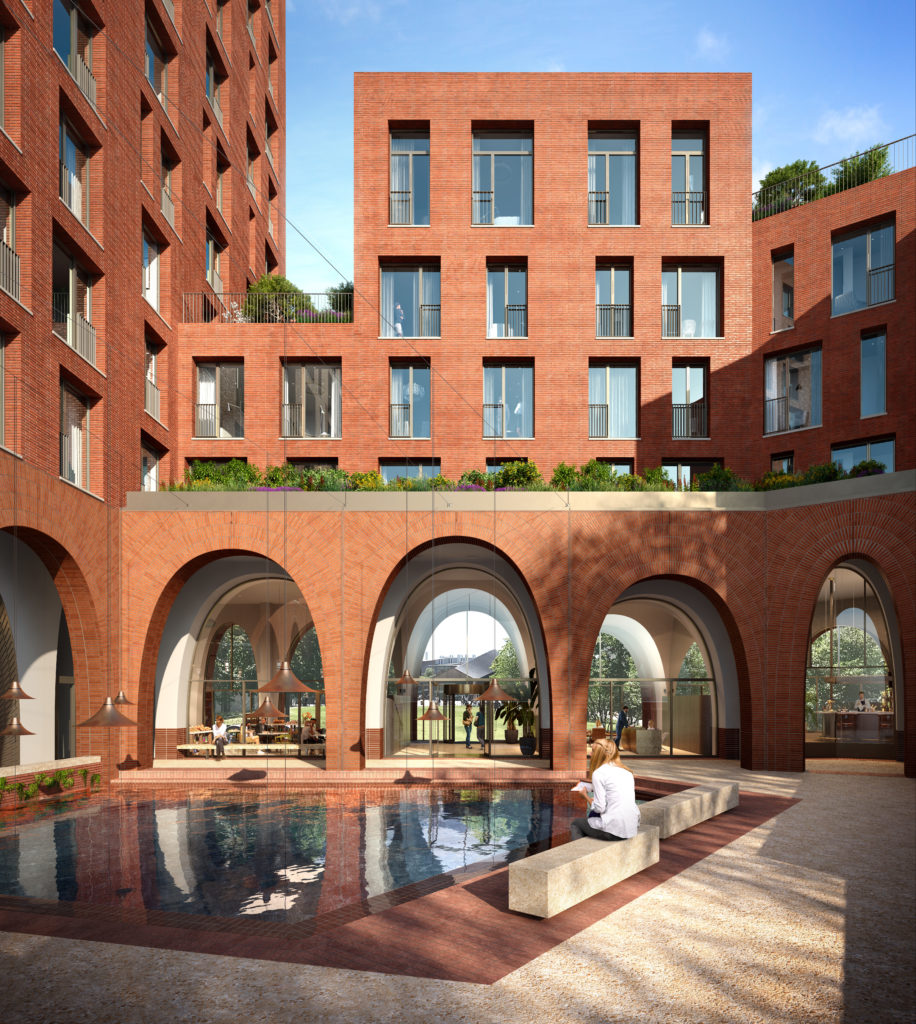
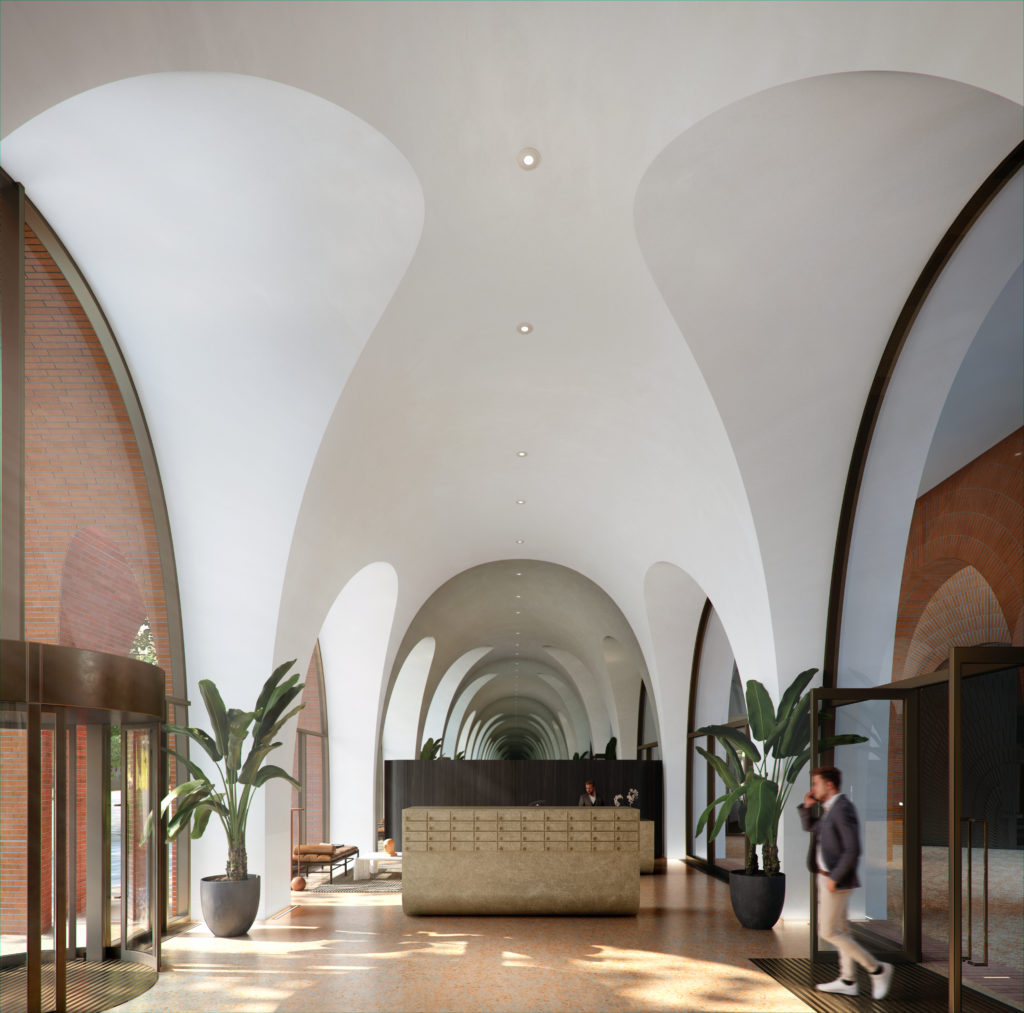
Alison Brooks Architects’ Cadence project in London is one sign that curves exert a fascination. Since buildings are with us for longer than furniture trends, they’re a reliable barometer of how tastes are evolving. Due to complete in 2022, the project is a housing development with an arcaded base and top. It responds to its context – the decorative arches of King’s Cross and St Pancras International stations – but reinterprets these in a contemporary way, deploying modern technology.
“Cadence’s arches are Bézier curves – a computer-generated parametric curve,” explains Alison Brooks, the practice’s principal. “The varying heights of the colonnade arches enliven the architecture, giving it rhythm and movement. I’ve always loved St Pancras station’s exuberant neo-Gothic architecture and King’s Cross station’s colossal semicircular arches. Cadence was an opportunity to celebrate this,” continues Brooks, who also admires the “sublime” brick arches of ancient Rome, citing the Roman Forum and Hadrian’s Villa.
“Since the early 20th century and modernism, arches have been considered retrograde and historicist,” she adds. “But today we look back with envy at the beautifully crafted, expressive arched facades of the 19th century.” She believes the appeal of curves is primeval: “For me, arches are about cultural memory and the natural affinity we humans have for curved forms.”
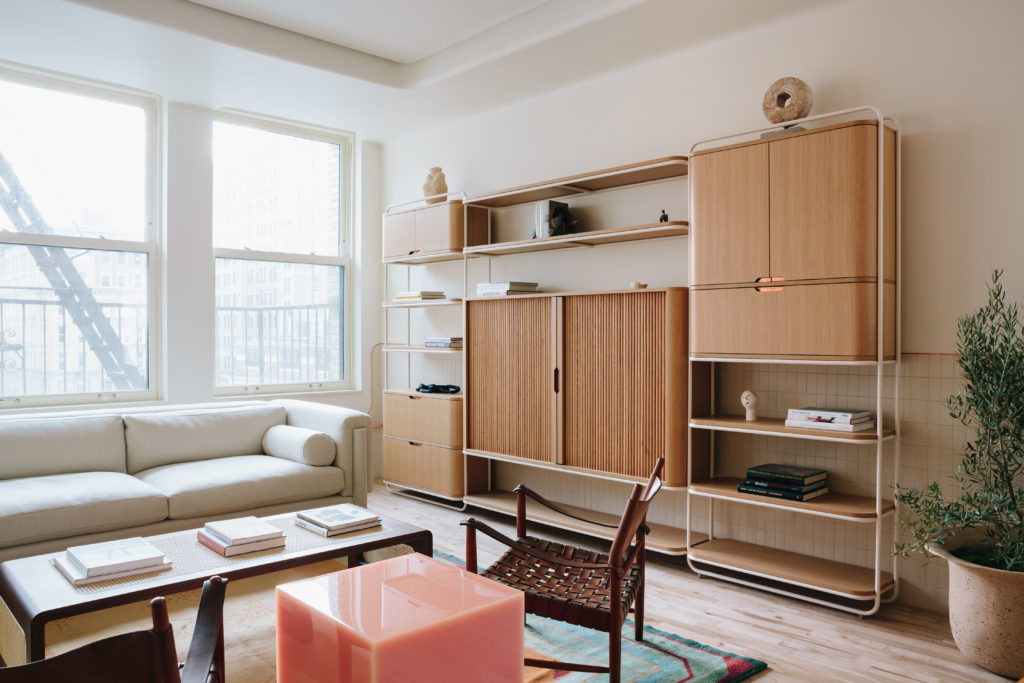
It’s oversimplifying things, however, to say curves were absent from 20th-century design. Inspired chiefly by Finnish architect Alvar Aalto, who, with first wife Aino, helped pioneer organic modernism in the late 1920s, designer Oliver Haslegrave, founder of Brooklyn-based practice Home Studios, has revamped an apartment called 20 Bond in New York’s NoHo neighbourhood. Haslegrave’s main reference point was Aalto’s Maison Louis Carré in France, co-designed by Aalto and his second wife, Elissa, in the 1950s. The house features a striking, curved ceiling made of pine. “We included images of the house and Aalto’s curvilinear Screen 100 in the initial moodboard we presented to our clients,” he recalls.
The interiors of 20 Bond also conjure up 1960s and 1970s pop design. In the bathrooms are copper-coloured mosaic tiles with extravagantly rounded corners; in the hallway are curved walls whose contours are subtly accentuated by fine copper lines.
Curves are welcoming – they have a stronger emotional impact than rectilinear spaces – Oliver Haslegrave, founder of Home Studios
“Curves are welcoming – they have a stronger emotional impact than rectilinear spaces,” says Haslegrave, also a fan of Mario Bellini, Italian creator of the iconic 1970s Camaleonda sofa with bulbous cushions. “It takes more effort and care to create curves.”
20 Bond brims with curved furniture and curvilinear elements, including a shelving unit (above) and headboard. One of its tables was created by Rotterdam-based designer Sabine Marcelis, who recently dreamt up the Boa pouf for Swedish brand Hem. The doughnut-shaped, ultra-minimal, foam-filled pouf – tautly covered in blush pink, primrose yellow or oatmeal wool – has a childlike simplicity. It’s partly inspired by Italian artist Agostino Bonalumi’s ‘painting-objects’ – canvases tautly stretched over objects placed behind them.
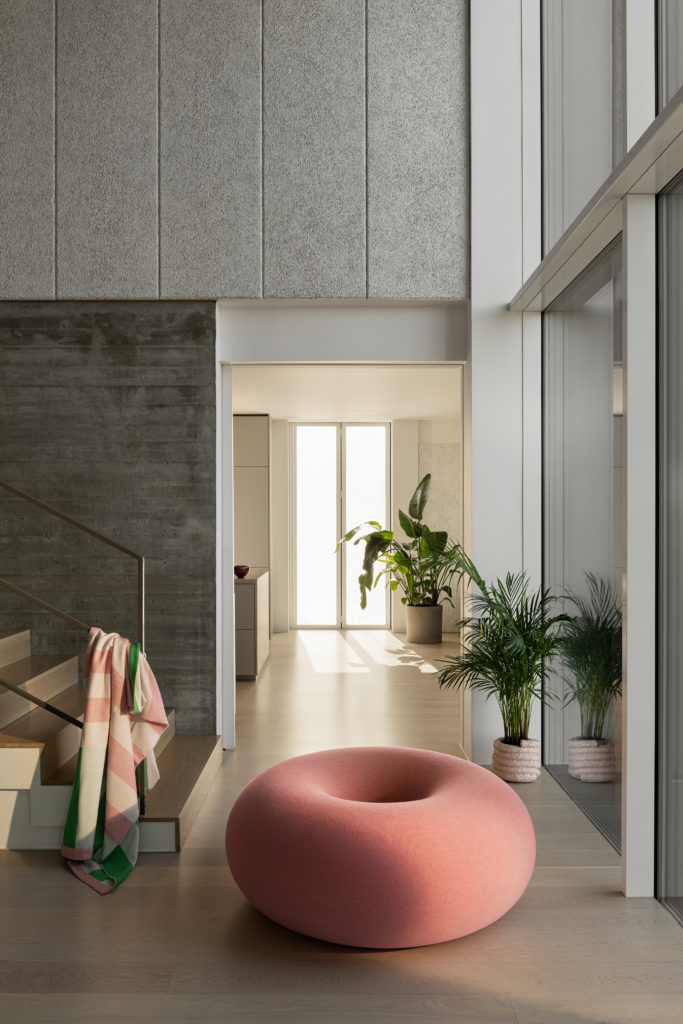

New York and Toronto-based design studio Yabu Pushelberg has produced the Pukka collection – a chubby sofa, chair and ottoman – for Ligne Roset. The seating channels the French brand’s DNA, complementing its classic, low-level Togo sofa designed in 1973 by Michel Ducaroy. “I believe this style of furniture is having its moment in the sun because the more people are at home, the more they realise the ultimate luxury is comfort,” says George Yabu, co-founder of the practice.
Swiss-born, London-based David Girelli’s Tramontana furniture collection, distributed by Yarn Collective, includes the curvaceous yet minimal Cape bench and Mush table, inspired by South African landscapes and king oyster mushrooms respectively. He has also created the Loop lounge chair for Wewood and ultra-minimal Tubus chair. “Curves are accessible,” he argues. “We’ve been stuck in boxes during much of the pandemic. Seeing something soft in a room, even if you’re not sitting on it, is visually pleasing.”
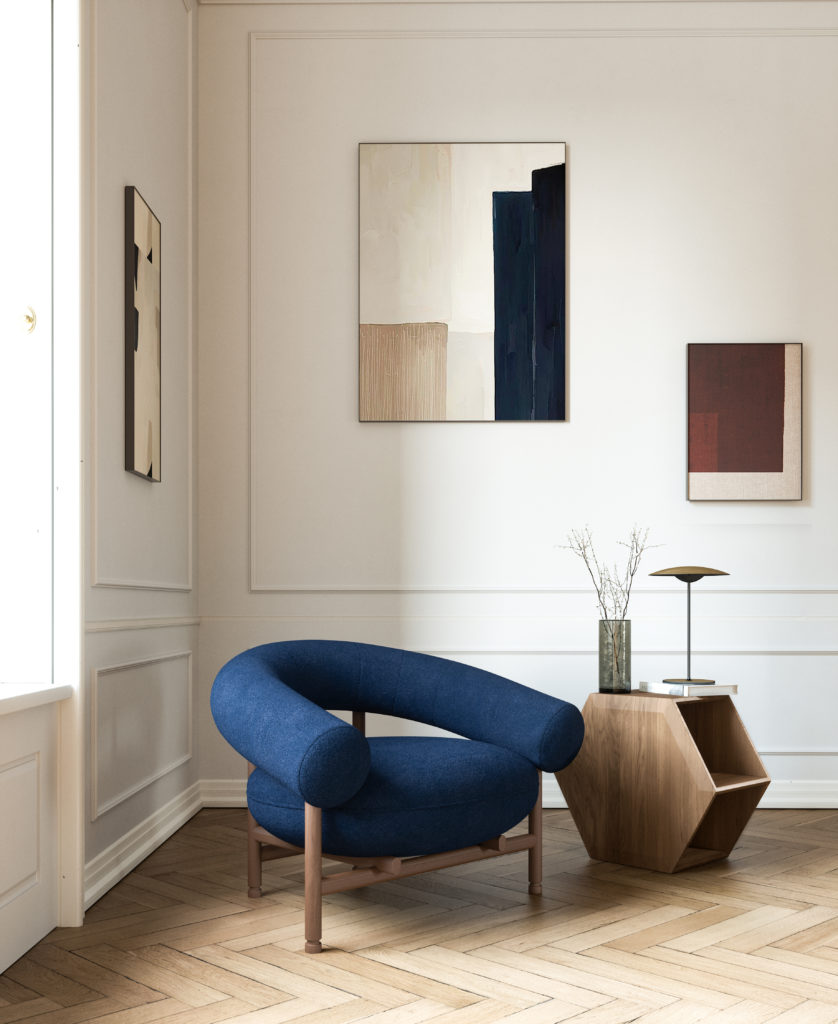
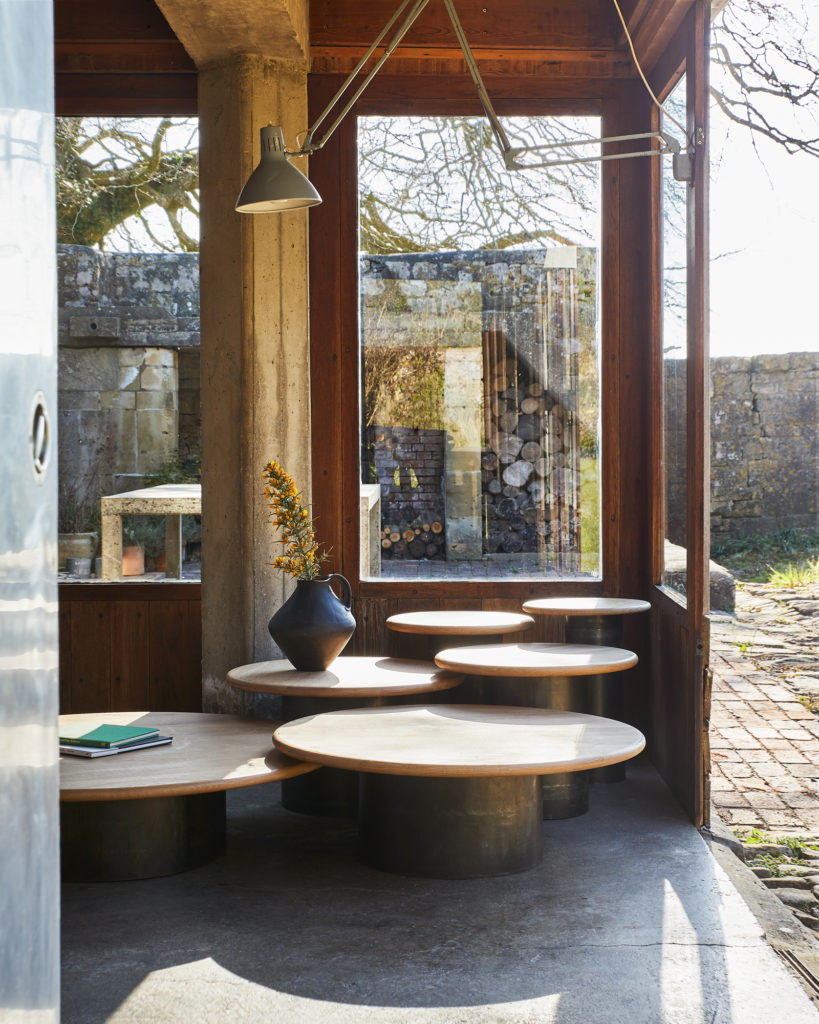
Then there’s London-based Fred Rigby’s Everyday curved furniture collection, inspired by the undulating landscapes and Jurassic Coast of Dorset where he grew up. “It includes tables inspired by rippling raindrops, soft modular seating in rich earth-like tones and a dining series made from solid oak with natural woodgrains that mirror tidal lines,” he explains. “Throughout our designs, we use curved, soft lines to impart an inviting feeling and disrupt harsh, geometric spaces.”
It’s not just designers and architects who are championing sensual curves, he argues. One major reason for their resurgence is a demand for them among consumers. “Over the past year, many people seem to have developed a greater affinity to nature and have become increasingly considerate of the materials and objects they bring into their everyday spaces.”
Effect Magazine is brought to you by Effetto



